Cilantro is an herb that can be grown in containers or in the ground. It is an annual flowering plant that is part of the parsley family.
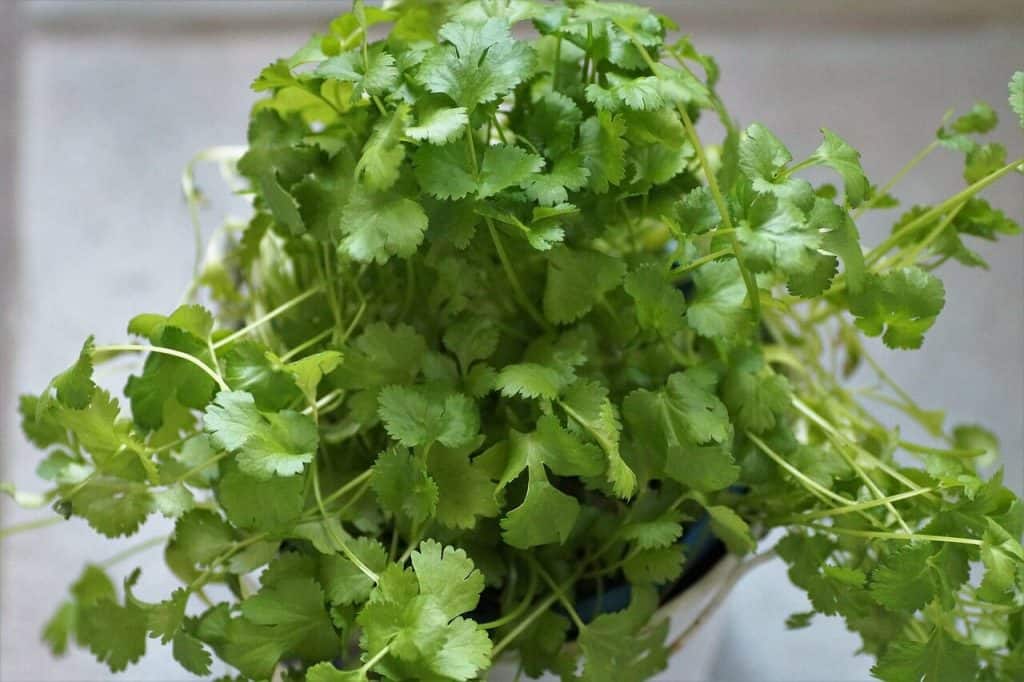
It is said that you either love the flavor of cilantro or you hate it. Those that hate it say it tastes soapy, while those that love it say that it is flavorful and really enhances spicy cuisines.
All parts of the plant are edible but it is usually the leaves and seeds that are consumed. Cilantro refers to the leaves of the herb, and coriander refers to the seeds. The leaves and stems are bold and spicy, while the seeds are more mild and sweet tasting.
Cilantro plants can grow to be about 20 inches tall, and if encouraged to bush out can grow to about 12 or so inches round. The flowers are white to pink shades. Cilantro does come in different varieties and can be a variety that bolts quickly or a slow bolt type.
A slow bolt variety would be Jantar. A quicker growing variety is Santo, and it will produce seeds about 10 days sooner. Once the flowers start to appear, cut them off to extend the growing season.
Varieties of Cilantro
There are several different varieties of cilantro that you can grow, some being easier than others:
- Leaf Cilantro- this looks the most similar to parsley. This variety consists of Long Standing, Jantar and Leisure which are all a slow bolting type.
- Culantro- also known as spiny coriander. This variety of cilantro, is actually a cousin, is similar to a long leaf lettuce, and can grow to about a foot high with leaves that are about two inches in width. It is used for both food, and medicinal purposes.
- Seed Coriander- this variety is mostly grown for its seeds. It is not a slow bolting type of plant. Santo is a type of seed coriander.
- Vietnamese Cilantro- This cilantro does best in hot tropical climates. This plant has narrow dark leaves with smooth edges and markings on both sides of the veins of the leaves. This variety is also used for food and medicinal purposes.
- Mexican Coriander- This is a low maintenance plant, and it attracts butterflies to your garden. This variety blooms in midsummer, and can also be used for medicinal purposes.
To grow cilantro you need to be sure that it receives full sun in the morning, and that it has well drained soil. It’s okay for it to receive some afternoon shade so that is is cooler. Cilantro grows best in cool temperatures.
As the months get warmer, the cilantro will send tall flowered shoots up to indicate the end of harvest. To be sure you have a good supply of cilantro you can stagger your planting so that you can harvest longer. Cilantro plants only live for six to seven weeks before going to seed; they have a very short growing span.
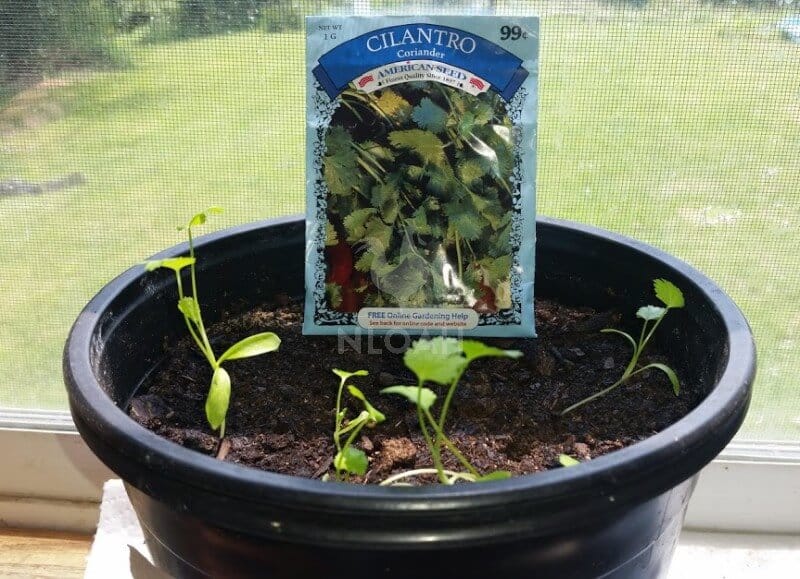
Starting From Seeds
If you are collecting the coriander seeds to re-sow later you will need to prepare them before planting. Gently crush the coriander hulls, this can usually be done by lightly pinching between your thumb and pointer finger. The hull is the outer part of the seed that is hard, tan to brown in color, and round. There are actually two seeds in each husk.
Soak the seeds in water for 24 to 48 hours and then remove them to dry. It’s fine to lay them out on a paper towel to dry for a few hours. If you follow these steps you will have a better chance of the seeds germinating. If you purchased a packet of seeds then they may be prepared for you. If this is the case, you’ll just need to follow the directions on your seed packet.
Do not overwater your seedlings as this will not allow them to germinate. Remember, they like a well drained soil. When planting, the seeds should be sown at about ¼ inch deep. Following these steps will generally get you a healthy patch of cilantro in a week or two after sowing.
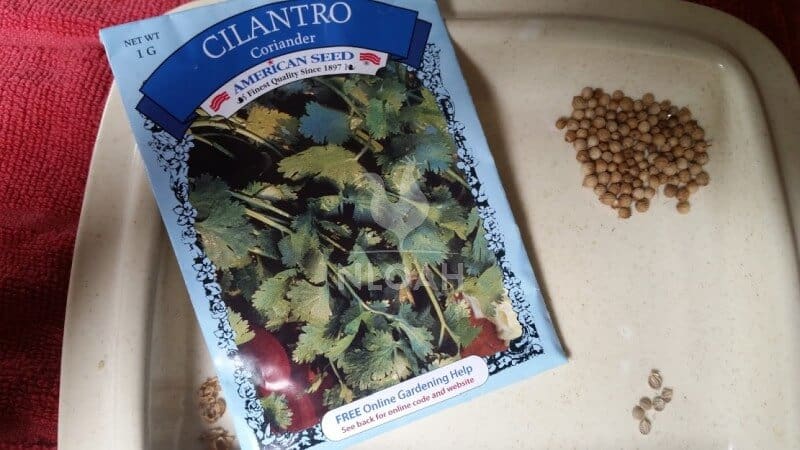
Transplanting
You may have purchased the plant from the market or received one from a neighbor to start your cilantro patch. You can also transplant from your seedlings and from your thinned out patch
In my opinion, it is a little harder to keep the plant alive after transplanting it. Plant cilantro in its own area so that it has adequate room to grow. Dig holes about every four inches, and place the plants in and cover them. Be sure to water thoroughly after transplanting.
Plant or thin cilantro to 4 to six 6 apart. Also, pinch back the young herb to get a bushy plant instead of a long, scraggly one. Mulching around your plants will help to keep them cool. Be sure to keep them evenly moist, but not over watered. Cilantro rarely has any issues with disease or pests, so it’s a fairly easy herb to grow.
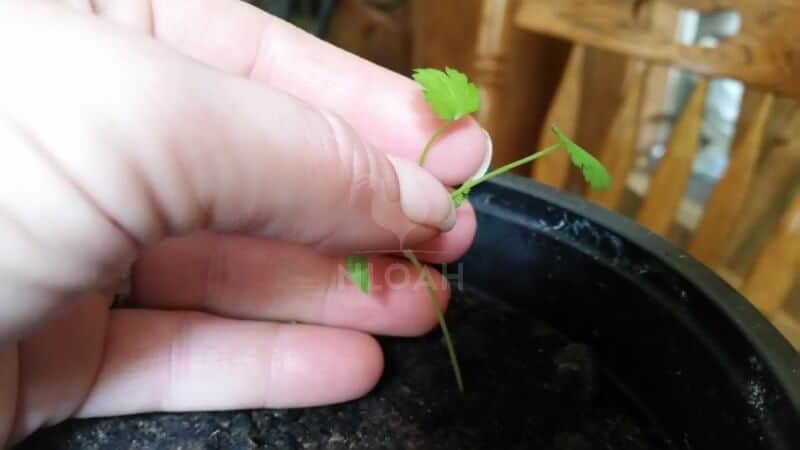
Container Planting
You need to be sure your container has holes to allow for drainage. You also need to have a good potting soil for sowing your seeds in. Plant the seeds at ¼ inch deep, and about one inch apart. Water thoroughly right after planting, then be sure to keep the soil moist afterwards.
Make sure that you put the pot where it can receive sunlight but will not get to hot from all day sun. If you do not have adequate sunlight then you can use a grow light. To have an abundance of cilantro it is recommended that you plant again in a few weeks.
Garden Planting
To plant in your garden bed, you put the seeds in the soil, and cover them with about ¼ inch of soil. Let the cilantro grow until it is at least two inches tall, and then thin it. Thin to about four to six inches, so the plants are close enough to cover the roots to help keep them cool, but far enough to allow growth.
It is okay to let the flower shoots go to seed, or bolt, as this is where coriander comes from. Allowing your cilantro to go to seed also allows for the plant to reseed itself. Once the seeds have dropped or been harvested for coriander, it is time to cut the shoot down. Once the cilantro has bolted, the flavor becomes very strong, even for those who love it.
Pests
Cilantro doesn’t get many pests, but like with all garden veggies it may happen.
Carrot-Willow Aphid
A green to yellow colored small-bodied insect. They live on the underside of the leaves. If you find the aphids early enough you can generally prune out the infested parts. If the infestation is larger, you may need to treat with insecticidal soaps or oils.
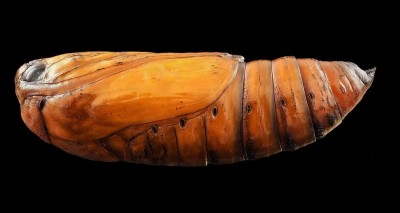
Cutworms
The cutworm will actually sever the stem of the plant off at the base next to the soil. The worm will lay in the soil or the foliage of dead plants throughout the day, and become active at night.
To treat cutworms, you can just remove them by hand. Also, put a sharp barrier around the plant to prevent them from crossing, for example crushed egg shells or diatomaceous earth, as it cuts them.
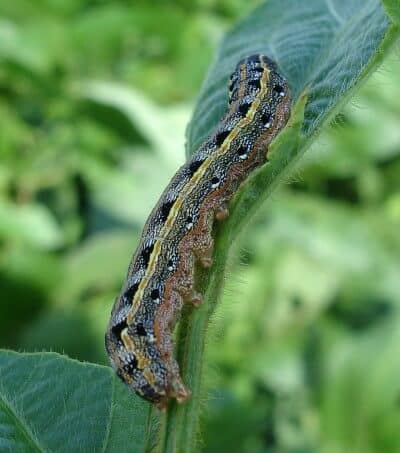
Armyworms
This worm will eat holes in your leaves or eat the whole leaf itself. Young larvae are green to yellow in color and the older larvae are a darker green with a line that goes down their side that is dark and light in color.
To rid the armyworm, you may need to physically remove it by hand or have a natural enemy that enjoys it. You can also treat with chemicals but they are not always effective.
Diseases
Most of the diseases affecting cilantro are bacterial, and are caused by being too wet. Bacteria thrive in oxygen depleted tissue.
Bacterial Leaf Spot
This is spread by infected seeds and overhead irrigation splashing the plants. This disease makes small water soaked spots between the leaf veins that turn dark brown to black. To manage bacterial leaf spot, be sure to plant pathogen-free seeds. Don’t work with the plants when they are wet, and avoid overhead irrigation.
Soft Root
Is caused by water soaked spots that are soft, sunken in and brown in color. Soft root occurs at the base of the leaf blade where it meets the stem. To control soft root, be sure not to injure the plant and allow it dry out before harvesting or pruning.
Damping Off
This disease is fungal and is caused by soft rotting seeds that fail to germinate, or that die off as soon as they emerge through the soil. To avoid these conditions, plant high quality seeds, and do it in well drained soil.
Powdery Mildew
This fungus causes a powdery growth over the plant. This disease is spread in the air and thrives in high humidity, and is more prevalent in shaded areas. To manage powdery mildew, plant tolerant varieties, maybe use a fungicide.
Harvest
You can harvest your cilantro leaves at any time. Do not cut back more than ⅓ of the plant when harvesting as it can cause it to weaken. It is said that it is best and most flavorful when the plant is about six inches tall. Use sharp scissors and cut the outer leaves for use. Leave the inner leaves of the plant so they can continue to grow.
Cilantro is at its best used fresh. It is not recommended for you to dry or store it. Also, if you wash the leaves you will rid it of the flavorful aromatic oils. An easy way to gather your seeds is to wait for the plant to turn brown, and place a paper bag over the plant tied to the stems and then hang it upside down to catch the seeds.
Don’t become discouraged with growing your cilantro. My first few attempts were a bit sad-looking. I was never sure of how much or when to prune or harvest. Then I just kind of went with it, figuring if I messed up it was a lesson learned and an easy fix, I was planting again anyhow.
Grow that cilantro, and enjoy the tasty dishes that you can create! And be sure to pin this article on one of your Pinterest boards for later!
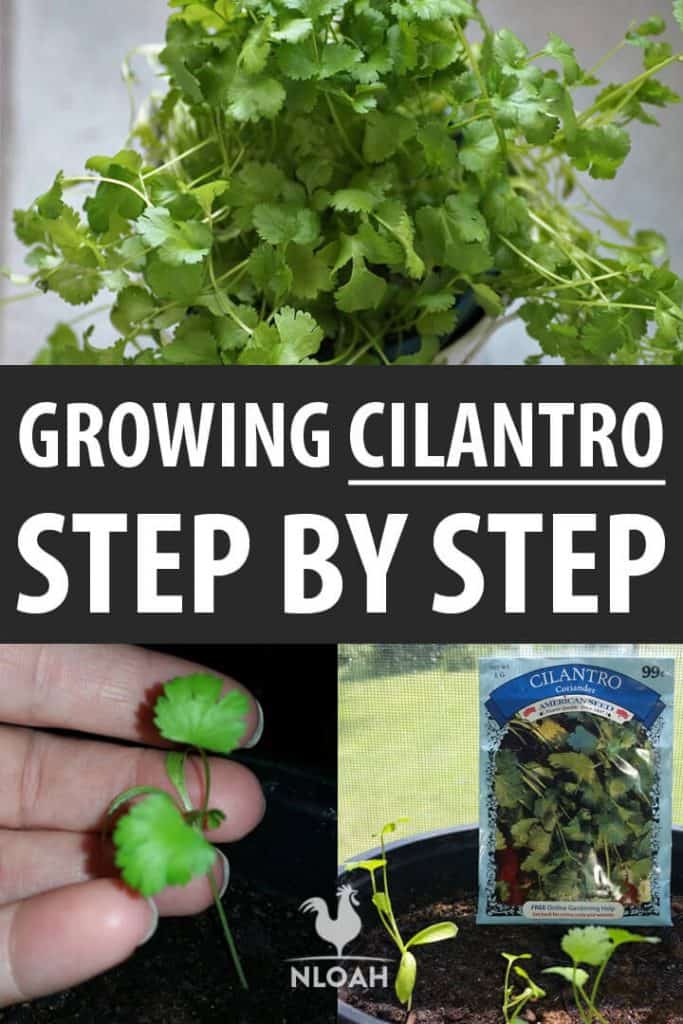

Sarah Rodriguez is a homesteading wife and mother of five living in Appalachia. She grew up in a homesteading and logging family.
She and her husband Arnie work their 10-acre homestead together alongside their growing family. Sarah honed her self-reliance skills through 4-H and FFA at an early age and is now teaching her children to live off the land, raise livestock, and the importance of both sustainability and frugality.
